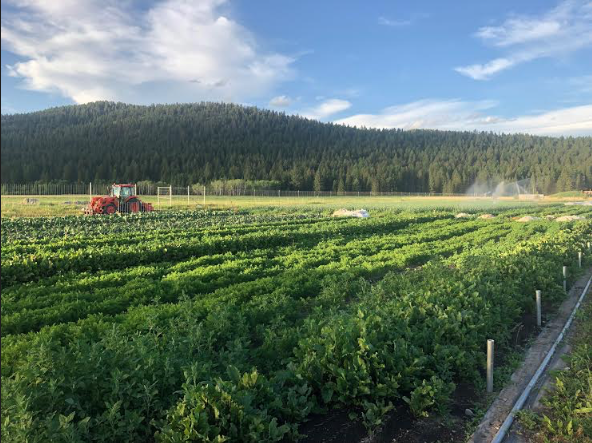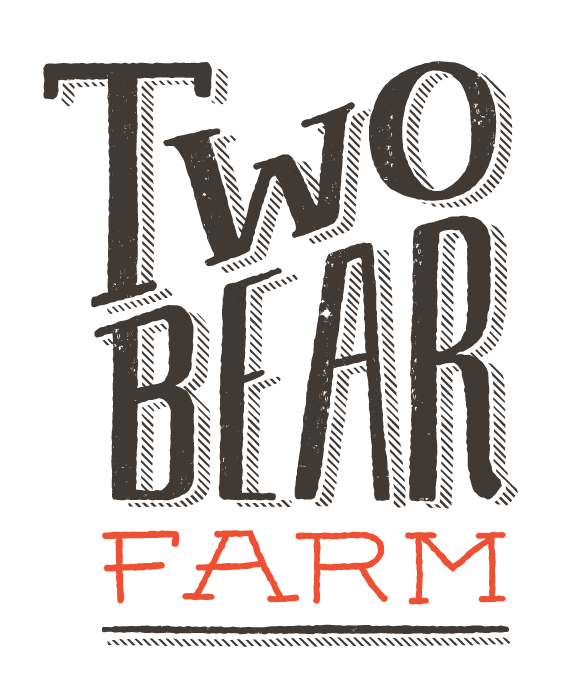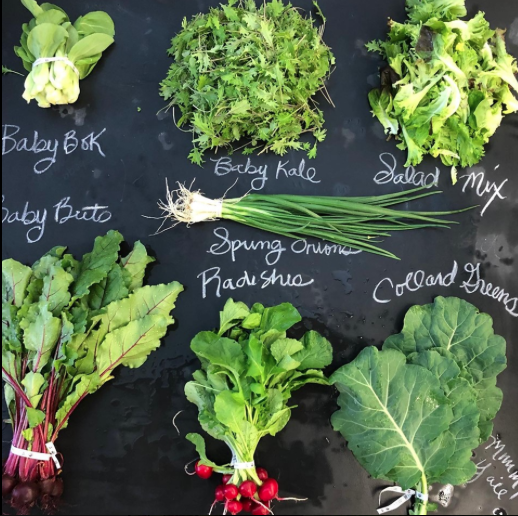Full Share: Baby kale mix, Salad Mix, Radishes, Green Onions, Collard Greens, Baby Beets, and Baby Bok Choy
Partial Share: Baby kale mix, Baby Beets, Salad Mix, Head lettuce, and Green Onions.
I just went out to close up the high tunnels and shut off irrigation, and it is a magnificently calm and beautiful eventing with great light.

Quite different from a few hours ago, when we were out planting sweet corn and it was hot, dusty, and the wind was blowing about 20mph. If a guy were smart, he’d take the afternoons off and work in the evenings?! The wind this season is really for the birds.
It’s a busy time of transition here at the farm. As we harvest off the first cold-hardy crops of spring, we are quickly replacing them with the warm-loving crops of summer. Which is good, because if feels like mid-July out there. Last week we managed to get all the tomatoes planted, and this week we are finishing planting with a big push of sweet corn and winter squash. This seasonality , which is really the heartbeat of the farm and so ever present in our daily tasks- waiting for the right time to plant each crop – is becoming less and less common in the lives of those who don’t farm, which is literally 99% of Americans. Out of sight, out of mind, as they say. Sure there’s the start of ski season, or fishing season, or the opening of the Going-to-the-Sun Road, but when it comes to our food, the homogenizing effects of global trade have steamrolled poor seasonality. We now have the convenience of being able to get “anything you want, any time you want it”. Unfortunately, that convenience comes with a heavy price, least of which is a loss of freshness, flavor, nutrition, and tradition.
Seasonality basically means growing crops at the appropriate time to allow them to survive until harvest. That means planting cold-hardy crops in the spring, when the temperatures frequently dip below freezing, with those with the shortest “days to maturity” ready first. So, crop like spinach, salad mix, radishes, baby bok choy all can handle a freeze, and only require about 30 days to mature, which is why you see lots of them in the early CSA shares . Next up are cold hardy crops that can surprisingly handle 18 degree nights ( I know, it’s fascinating), but take a bit longer to mature, such as cabbage, broccoli, cauliflower, beets, and carrots. Given the challenging growing climate in Montana, these are excellent crops to love, because they can been grown during a large chunk of the season, and enjoyed by consumers for a much longer period of time. Conversely, heat-loving, cold-sensitive crops are available for a much shorter time frame, because they can not survive freezing temps. Did you know that the average last frost date in spring for the Flathead Valley is June 10th?! That means it’s always a gamble as to when to plant tomatoes, squash, corn, eggplant, and peppers. Let’s say you gamble and pick June 1st. Well, in the case of sweet corn, it takes between 75 to 90 days (due to our cold nights) to reach maturity after planting, so you’re looking at the middle to the end of August at the earliest. It’s hard to have sweet corn any sooner than that, and so one begins to anticipate the end of summer tradition of sweet corn. This sort of anticipation, of late-fall apples, or late-summer corn, are the traditions that disappear in our global system. Maybe anticipation, much like seasonality, is a dinosaur in this world of instant gratification?
The reason I bring seasonality up (aside from some of the questions I get asked at farmer’s market), is that it plays a huge role in what the contents of your weekly CSA share will be. You don’t get corn in May. But, you do get to enjoy the unfolding of the season, experiencing first hand what this beautiful landscape can produce each week. Personally, I find it all very grounding.
So this week, the first beets begin to roll into the shares (try the greens…maybe in a spicy peanut sauce?). In order to plant cucumbers in the tunnel, we need to harvest all the salad mix, so you’re getting a slightly heavier dose of it this week. To help you out, here is a great recipe for a unique Glory Bowl dressing. I picked this site only because it was the only one to use olive oil in place of vegetable oil. This dressing goes great on lots of foods, not just salad and spinach. And the first collard greens are here as well. I know, they don’t get much respect. But, they are great as “wraps” in place of tortillas, or stuff them with cheese, bacon, sun dried tomatoes, etc., and lightly grill them. Delicious!
Stay hydrated out there, and we’ll see you at share pickup!
Todd








